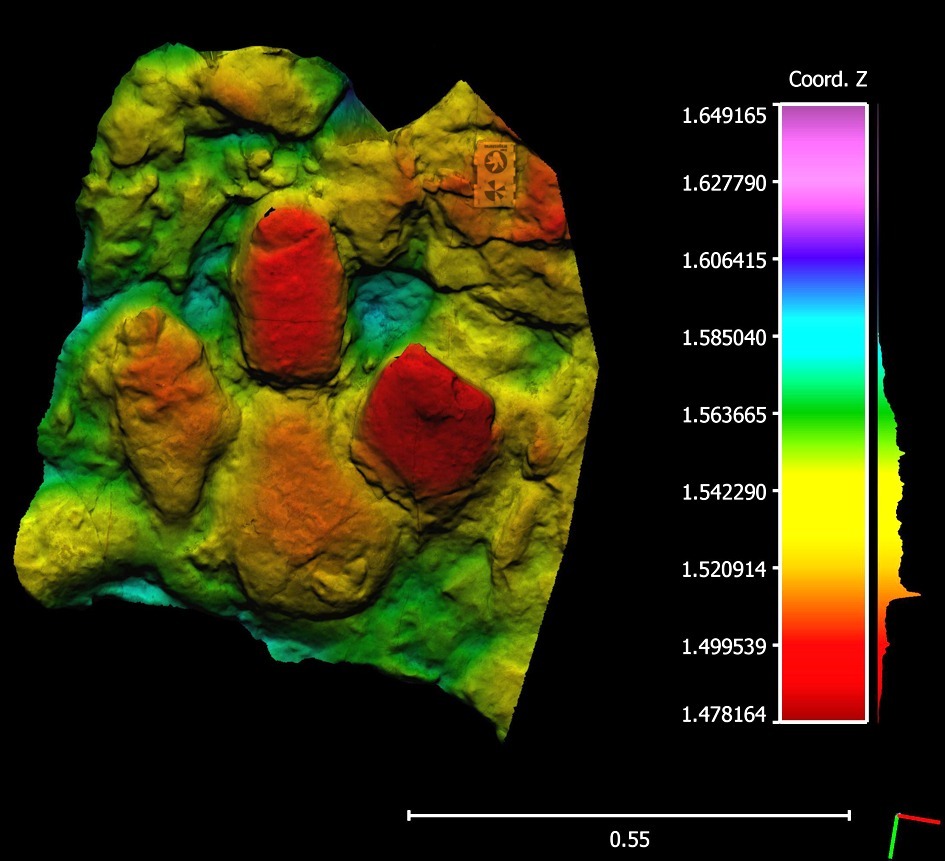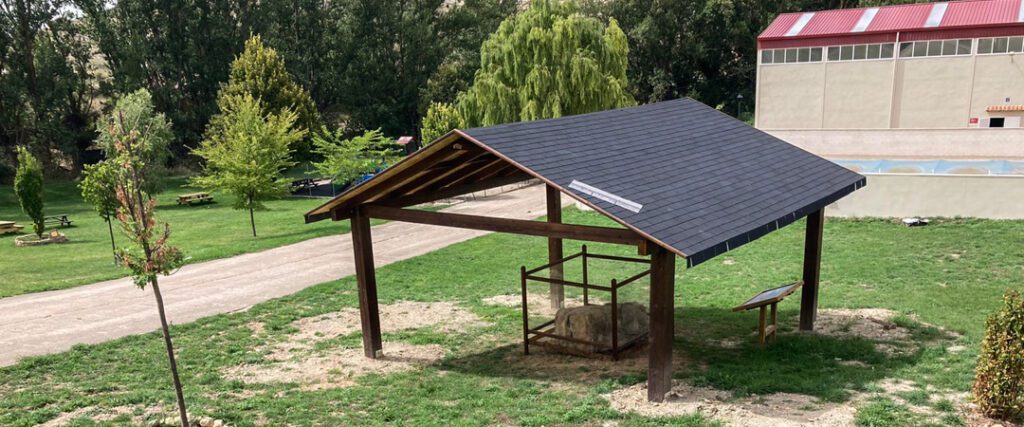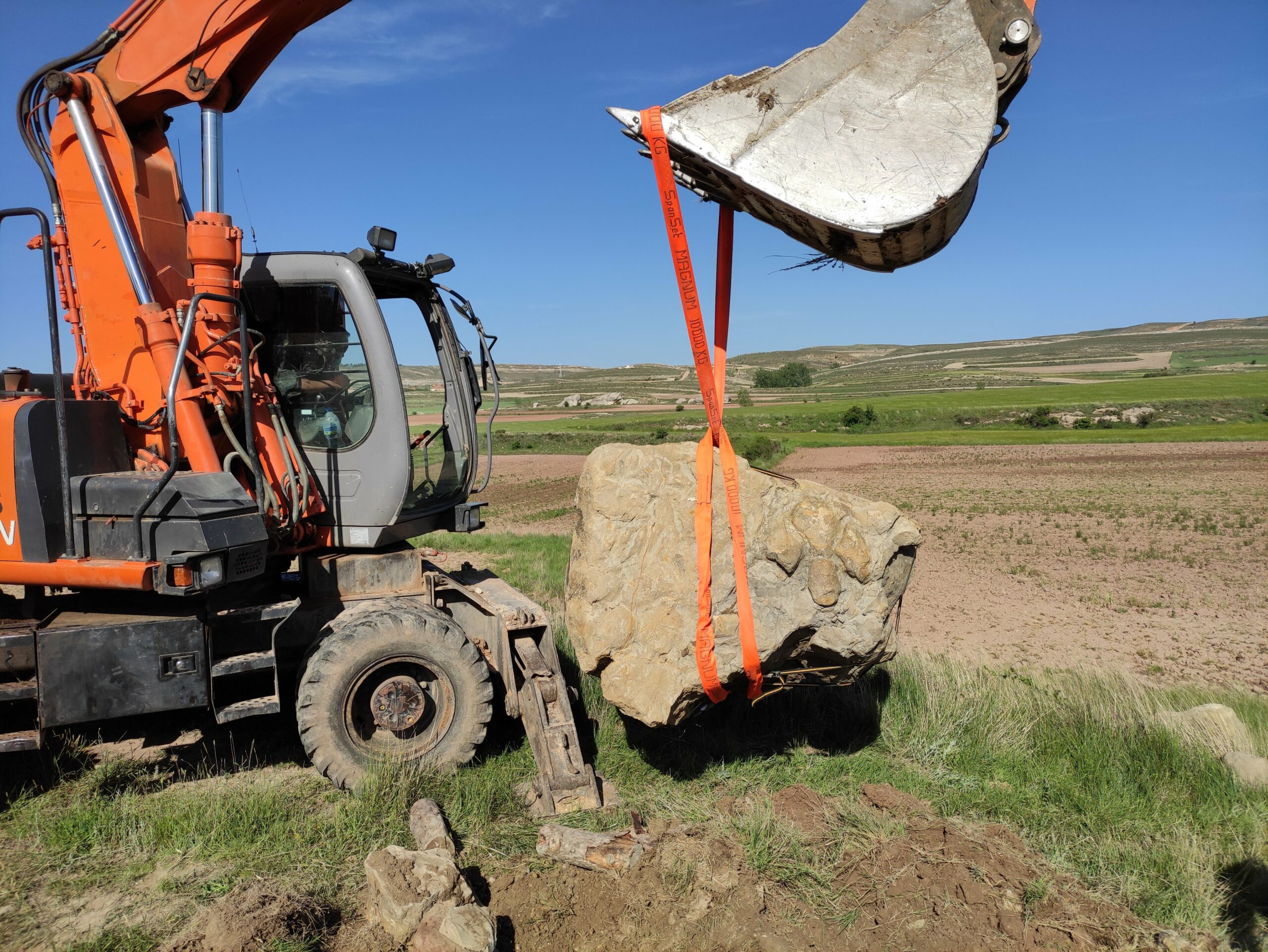LOCALIZACIÓN: Camarillas, Teruel
TIPO YACIMIENTO: lacustre
EDAD: Cretácico Inferior, Barremiense inferior
TIPO DE HALLAZGOS: Icnitas de dinosaurio
ORGANISMOS: Dinosaurios ornitópodos
ROCA QUE LOS CONTIENE: Calizas
Descripción:
El yacimiento de San Benón fue descubierto por el vecino de la localidad Pedro Cirugeda, quien se percató cuando iba en el tractor de unos bloques de roca caliza en el margen de la carretera A-228 que habían sido removidos de su posición original durante su construcción. Así Pedro, aficionado a la paleontología, rápidamente identificó que las marcas del bloque eran huellas de dinosaurio y dio aviso a la Dirección General de Patrimonio Cultural del Gobierno de Aragón. Fueron estudiadas por un equipo del grupo Aragosaurus liderado por Diego Castanera y publicadas en la revista Paleo 3 en el año 2022.
Entre las peculiaridades del yacimiento destaca lo bien conservadas que están algunas de las icnitas que permiten reconocer todos los detalles de los pies de los dinosaurios que las formaron. Son icnitas de gran tamaño (más de 50 cm) y muy robustas Representan la evidencia más antigua de la Cuenca del Maestrazgo de icnitas de la icnoespecie Caririchnium magnificum. Se asignan a dinosaurios herbívoros del grupo de los ornitópodos, emparentados con el famoso Iguanodon. Este grupo de dinosaurios fueron muy abundantes en los ecosistemas del Cretácico Inferior (hace unos 125 Ma) y se encuentran en muchas localidades de Teruel.

La conservación de las icnitas de San Benón tiene características singulares. Generalmente se encuentra las icnitas como en un relieve negativo es decir una depresión, sin embargo, en este yacimiento las icnitas se conservan en relieve positivo, es decir sobresaliendo de la base del estrato de calizas. Este tipo de conservación es más típico en las areniscas muchas veces formadas en un medio fluvial. En el caso de Benón las icnitas se formaron por las variaciones del nivel del agua en la orilla del lago. Este es uno de los escasos ejemplos descritos hasta el momento en la península ibérica.
Las icnitas se pueden visitar, al encontrase expuestas y musealizadas en el parque de Camarillas gracias a una actuación promovida por el Ayuntamiento de Camarillas en la que hemos colaborado junto con los colegas de Paleoymás.

Ver más en: Castanera, D., Bádenas, B., Aurell, M., Canudo, J. I., & Gasca, J. M. (2022). New ornithopod tracks from the Lower Cretaceous El Castellar Formation (Spain): Implications for track preservation and evolution of ornithopod footprints. Palaeogeography, Palaeoclimatology, Palaeoecology, 591, 110866.
 Description:
Description:
The San Benón trackiste was discovered by Pedro Cirugeda, a resident of the town of Camarillas, who noticed some limestone blocks on the side of the road A-228 that had been removed from their original position during the construction. Thus Pedro, fond of paleontology, quickly identified that the marks on the block were dinosaur footprints and notified the General Directorate of Cultural Heritage of the Government of Aragon. They were studied by a team from the Aragosaurus group led by Diego Castanera and published in the journal Paleo 3 in the year 2022.
Among the peculiarities of the site, it stands out how well preserved some of the footprints are, which allow us to recognize all the details of the feet of the dinosaurs that formed them. They are large footprints (more than 50 cm) and very robust. They represent the oldest evidence in the Maestrazgo Basin of footprints of the ichnospecies Caririchnium magnificum. They are assigned to herbivorous dinosaurs of the group of ornithopods, related to the famous Iguanodon. This group of dinosaurs were very abundant in the Lower Cretaceous ecosystems (about 125 Ma ago) and are found in many locations in Teruel.
The preservation of the footprints in San Benón has unique characteristics. The footprints are generally found in a negative relief, that is, a depression, however, in this tracksite the footprints are preserved as a positive relief, that is, protruding from the base of the limestone stratum. This type of conservation is more typical in sandstones often formed in a fluvial environment. In the case of Benón, the footprints were formed by variations in the water level on the shore of the lake. This is one of the few examples described so far in the Iberian Peninsula.
The footprints can be visited, as they are exposed and displayed in the Camarillas park thanks to a performance promoted by the Camarillas City Council in which we have collaborated together with our colleagues from Paleoymás.
The reference is: Castanera, D., Bádenas, B., Aurell, M., Canudo, J. I., & Gasca, J. M. (2022). New ornithopod tracks from the Lower Cretaceous El Castellar Formation (Spain): Implications for track preservation and evolution of ornithopod footprints. Palaeogeography, Palaeoclimatology, Palaeoecology, 591, 110866.









 Description:
Description:














